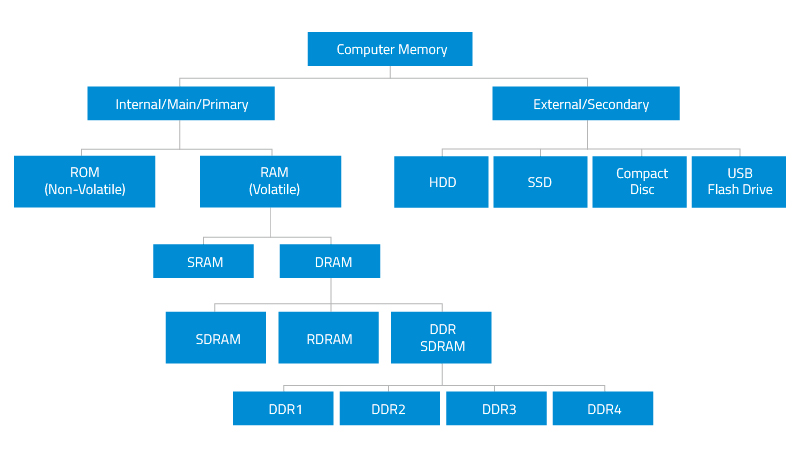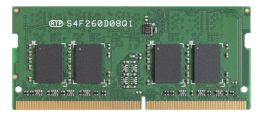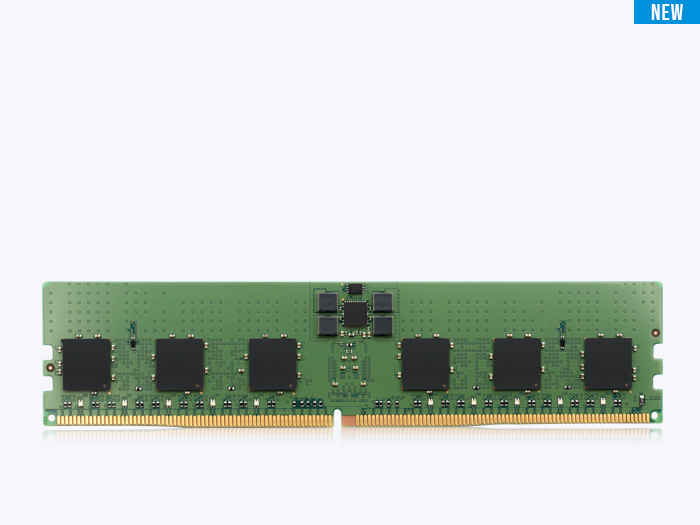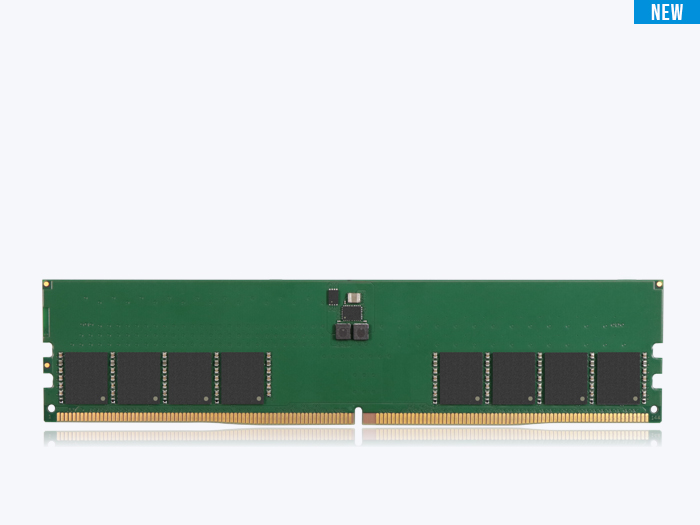What is internal memory and how is it different from external memory?
Computer memory is generally classified as either internal or external memory.
Internal memory, also called "main or primary memory" refers to memory that stores small amounts of data that can be accessed quickly while the computer is running.
External memory, also called "secondary memory" refers to a storage device that can retain or store data persistently. They could be embedded or removable storage devices. Examples include hard disk or solid state drives, USB flash drives, and compact discs.
What are the types of internal memory?
There are basically two kinds of internal memory: ROM and RAM.
ROM stands for read-only memory. It is non-volatile, which means it can retain data even without power. It is used mainly to start or boot up a computer.
Once the operating system is loaded, the computer uses RAM, which stands for random-access memory, which temporarily stores data while the central processing unit (CPU) is executing other tasks. With more RAM on the computer, the less the CPU has to read data from the external or secondary memory (storage device), allowing the computer to run faster. RAM is fast but it is volatile, which means it will not retain data if there is no power. It is therefore important to save data to the storage device before the system is turned off.
What are the types of RAM?
There are two main types of RAM: Dynamic RAM (DRAM) and Static RAM (SRAM).
- DRAM (pronounced DEE-RAM), is widely used as a computer’s main memory. Each DRAM memory cell is made up of a transistor and a capacitor within an integrated circuit, and a data bit is stored in the capacitor. Since transistors always leak a small amount, the capacitors will slowly discharge, causing information stored in it to drain; hence, DRAM has to be refreshed (given a new electronic charge) every few milliseconds to retain data.
- SRAM (pronounced ES-RAM) is made up of four to six transistors. It keeps data in the memory as long as power is supplied to the system unlike DRAM, which has to be refreshed periodically. As such, SRAM is faster but also more expensive, making DRAM the more prevalent memory in computer systems.
What are the common types of DRAM?
-
Synchronous DRAM (SDRAM) “synchronizes” the memory speed with CPU clock speed so that the memory controller knows the exact clock cycle when the requested data will be ready. This allows the CPU to perform more instructions at a given time. Typical SDRAM transfers data at speeds up to 133 MHz.
-
Rambus DRAM (RDRAM) takes its name after the company that made it, Rambus. It was popular in the early 2000s and was mainly used for video game devices and graphics cards, with transfer speeds up to 1 GHz.
-
Double Data Rate SDRAM (DDR SDRAM) is a type of synchronous memory that nearly doubles the bandwidth of a single data rate (SDR) SDRAM running at the same clock frequency by employing a method called "double pumping," which allows transfer of data on both the rising and falling edges of the clock signal without any increase in clock frequency.
-
DDR1 SDRAM has been succeeded by DDR2, DDR3, and most recently, DDR4 SDRAM. Although operating on the same principles, the modules are not backward-compatible. Each generation delivers higher transfer rates and faster performance. The latest DDR4 modules, for example, feature fast transfer rates at 2133/2400/2666and even 3200 MT/s.

Figure 1. Types of computer memory.
What are the types of DRAM packages?
-
Single In-Line Memory Module (SIMM)
SIMM modules were widely used from the late 1980s to 1990s, and are now obsolete. They typically had 32-bit data bus and were available in two physical types—30- and 72-pin. -
Dual In-Line Memory Module (DIMM)
Current memory modules come in DIMMs. "Dual in-line" refers to pins on both sides of the modules. A DIMM originally had a 168-pin connector supporting 64-bit data bus, which is twice the data width of SIMMs. The wider bus means that more data can pass through a DIMM, translating to faster overall performance. Latest DIMMs based on fourth-generation double data rate (DDR4) SDRAM have 288-pin connectors for increased data throughput.
What are the common types of DIMM?
There are several DIMM architectures. Different platforms can accommodate different memory types so it is best to check which modules are supported on the motherboard. Here are the most common standard DIMMs, with a typical length of 133.35 mm and height of 30 mm.
|
DIMM Type |
Description |
|
Unbuffered DIMMs |
Used mainly on desktop and laptop computers. They run faster and cost less, but are not as stable as registered memory. Commands go directly from the memory controller residing in the CPU to the memory module. |
|
Fully buffered DIMMs |
Typically used as main memory in systems requiring large capacities such as servers and workstations, FB-DIMMs use advanced memory buffer (AMB) chips to increase reliability, maintain signal integrity and improve error detection methods to reduce soft errors. The AMB bus is split into a 14-bit read bus and a 10-bit write bus. By having a dedicated read/write bus, reads and writes can happen simultaneously, resulting in increased performance. Lesser pin counts (69 pins per serial channel compared with 240 pins on parallel channels), result in lesser routing complexity and allowing smaller board designs for compact, small form factor systems. |
|
Registered DIMMs |
Also known as "buffered" memory, are often used in servers and other applications requiring stability and robustness. RDIMMs feature onboard memory registers (hence the name "registered") placed between the memory and memory controller. The memory controller buffers Command, Addressing and Clock Cycling, directing instructions to the dedicated memory registers instead of accessing the DRAM directly. As a result, the instructions could take approximately one CPU cycle longer, but the buffering reduces the strain on the CPU's memory controller. |
|
Load Reduced DIMMs |
Use Isolation Memory Buffer (iMB) technology, which reduces the load on the memory controller by buffering both data and address lanes. Unlike the register on RDIMMs which buffer only Command, Addressing and Clock Cycling, the iMB chip also buffers data signals. The iMB chip isolates all electrical loading including data signals of the DRAM chips on the DIMM from the memory controller, so the memory controller only sees the iMB and not the DRAM chips. The memory buffer then handles all reads and writes to the DRAM chips, boosting both capacity and speed. (Source: Isolation Memory Buffer) |
Table 1. Common types of DIMMs.
Aside from standard-size DIMMs, are there small form factor DIMMs for space-constrained systems?
Small outline DIMMs (SO-DIMMs) are the smaller alternatives to DIMMs. While the standard DDR4 DIMM is about 133.35 mm in length, SO-DIMMs are just about half the size of regular DIMMs at 69.6 mm long, making them ideal for ultra-portable devices. Both commonly have a height of 30 mm but may be available in very low profile (VLP) format at 20.3 mm tall or ultra-low profile (ULP) at 17.8 to 18.2 mm. Another type of small form factor DIMM is the Mini-RDIMM, which has a length of only 82 mm compared with 133 mm of regular RDIMMs.
ATP DRAM Products
ATP提供具有不同架构,容量和外形尺寸的工业存储模块。 ATP DRAM模块通常用于工业PC和嵌入式系统中。 ATP DRAM模块具有抗振动,冲击,防尘和其他挑战性条件的能力,即使在要求最恶劣的工作环境和应用以及不同的操作环境中也能保持良好的性能。
出于产品寿命的考虑,ATP还根据与美光科技公司(Micron Technology,Inc.)的许可协议,继续以选定尺寸的形式提供传统的DRAM模块。
为了确保高可靠性,ATP使用自动测试设备(ATE)对从IC级至模块和产品级别进行全面的测试和验证,以测试各种电气参数,例如连续热循环下的边缘电压,信号频率,时钟周期,命令时序和数据时序。老化测试(TDBI)采用了特殊的热处理室,对模块进行了低温和高温测试,以筛选出有缺陷的组件并最大程度地降低IC早期故障率,从而确保更高的生产质量并减少实际的现场故障。
下表显示了ATP的DDR4 DRAM产品:
|
DIMM Type |
Size (L x H mm) / Image |
|
DDR4 |
Standard: 133.35 x 31.25 Very Low Profile (VLP): 133.35 x 18.75 |
|
DDR4 |
133.35 x 31.25 |
|
DDR4 |
69.6 x 30
|
|
DDR4 |
Very Low Profile (VLP): 80 x 18.75
|
表2. ATP DDR4 DRAM产品。 (也提供非ECC版本。)
下表显示了不同类型的DRAM模块之间的尺寸比较:
|
DIMM Type |
Size (L x H mm) |
|
|
DDR4 |
Standard |
133.35 x 31.25 |
|
VLP (Very Low Profile) |
133.35 x 18.75 |
|
|
DDR3 |
Standard |
133.35 x 30 |
|
VLP |
133.35 x 18.28 to 18.79 |
|
|
ULP (Ultra-Low Profile) |
133.35 x 17.78 to 18.28 |
|
|
DDR2 |
Standard |
133.35 x 30 |
|
VLP |
133.35 x 18.28 to 18.79 |
|
|
DDR |
Standard |
133.35 x 30 |
|
VLP |
133.35 x 18.28 to 18.79 |
|
|
SDRAM |
Standard |
133.35 x 25.4 to 43.18 |
表3. DDR4 / DDR3 / DDR2 / DDR尺寸的比较
For the detailed list, specifications and descriptions of ATP's DRAM products, visit the ATP website or contact an ATP Distributor/Representative in your area.







